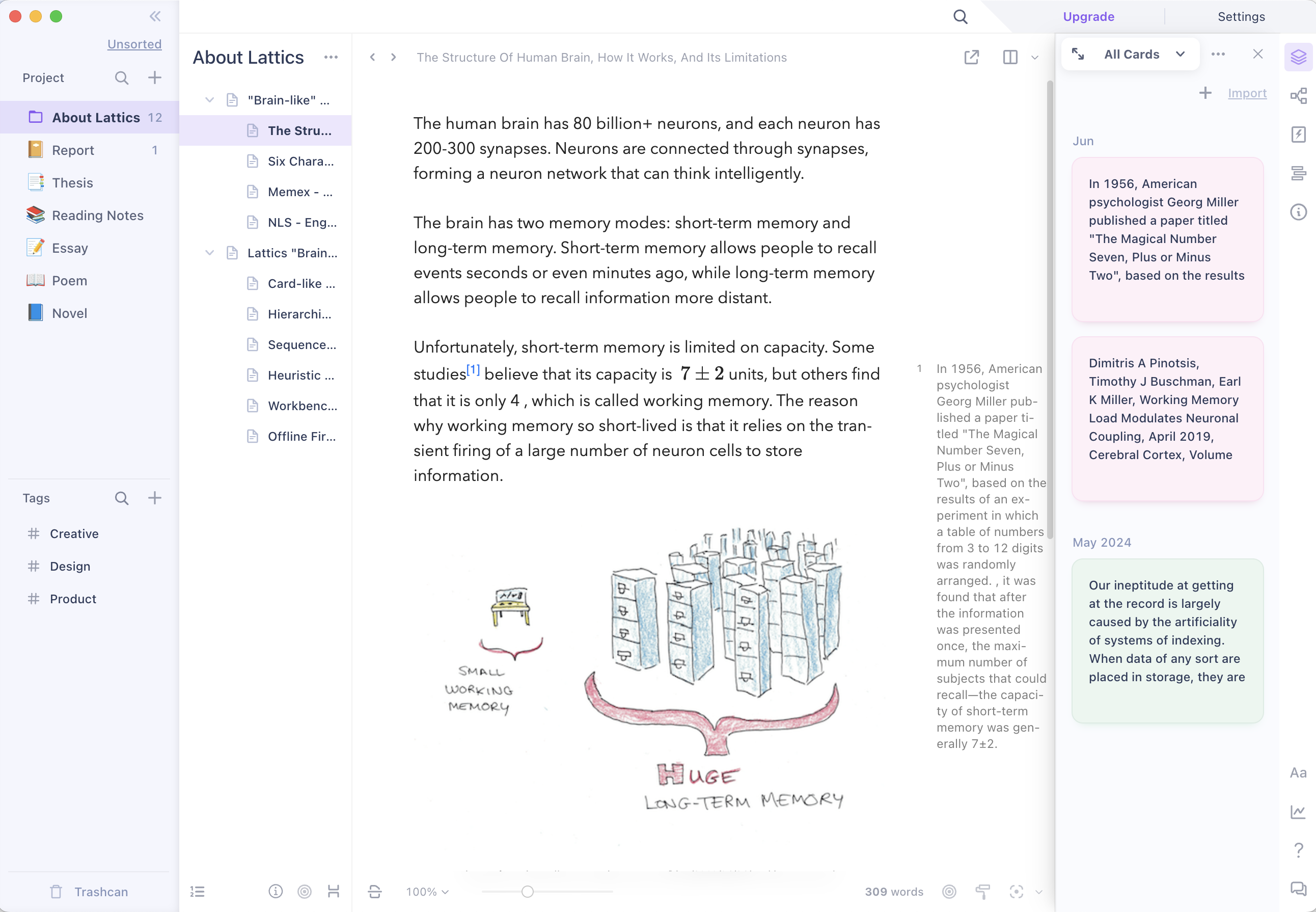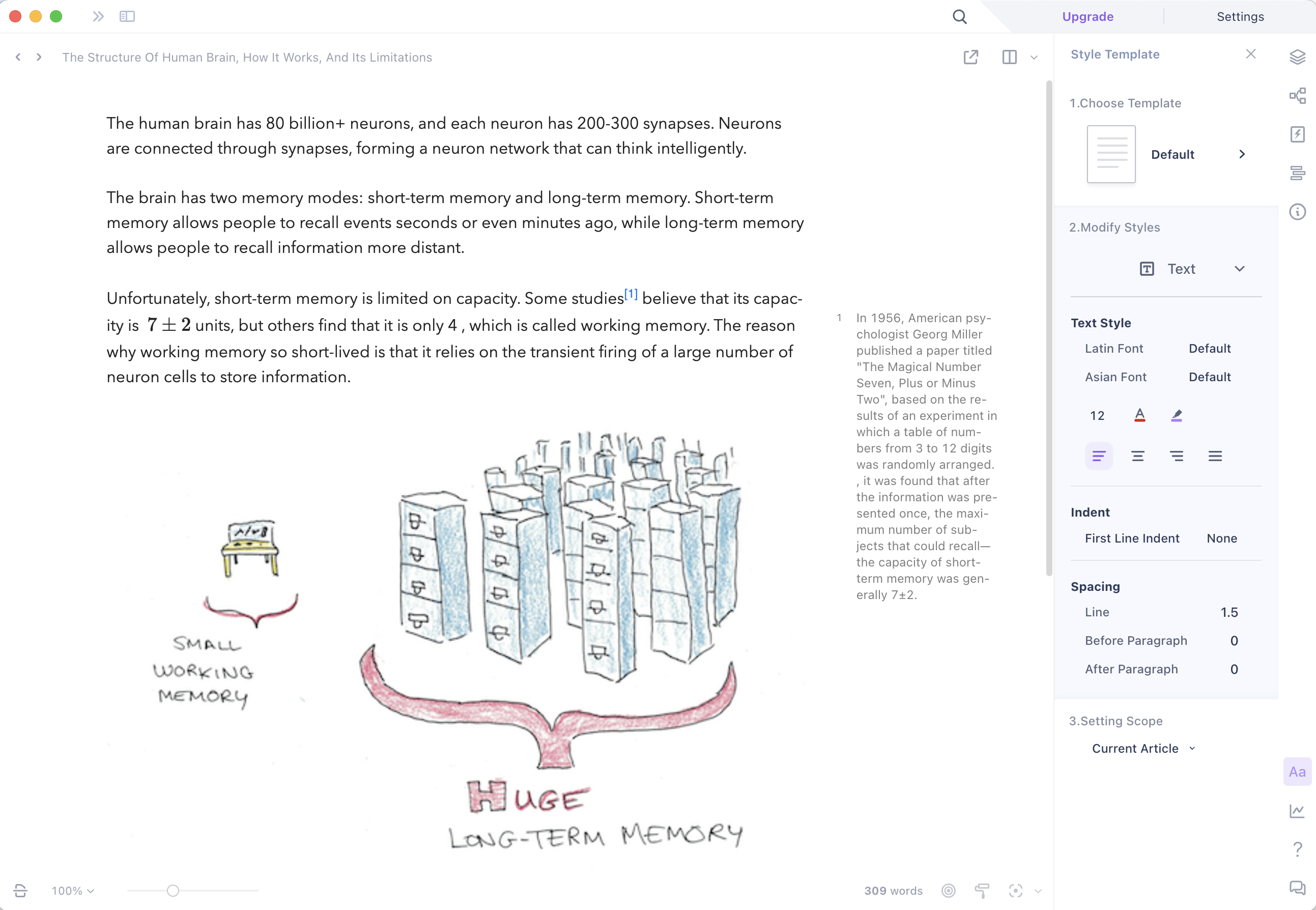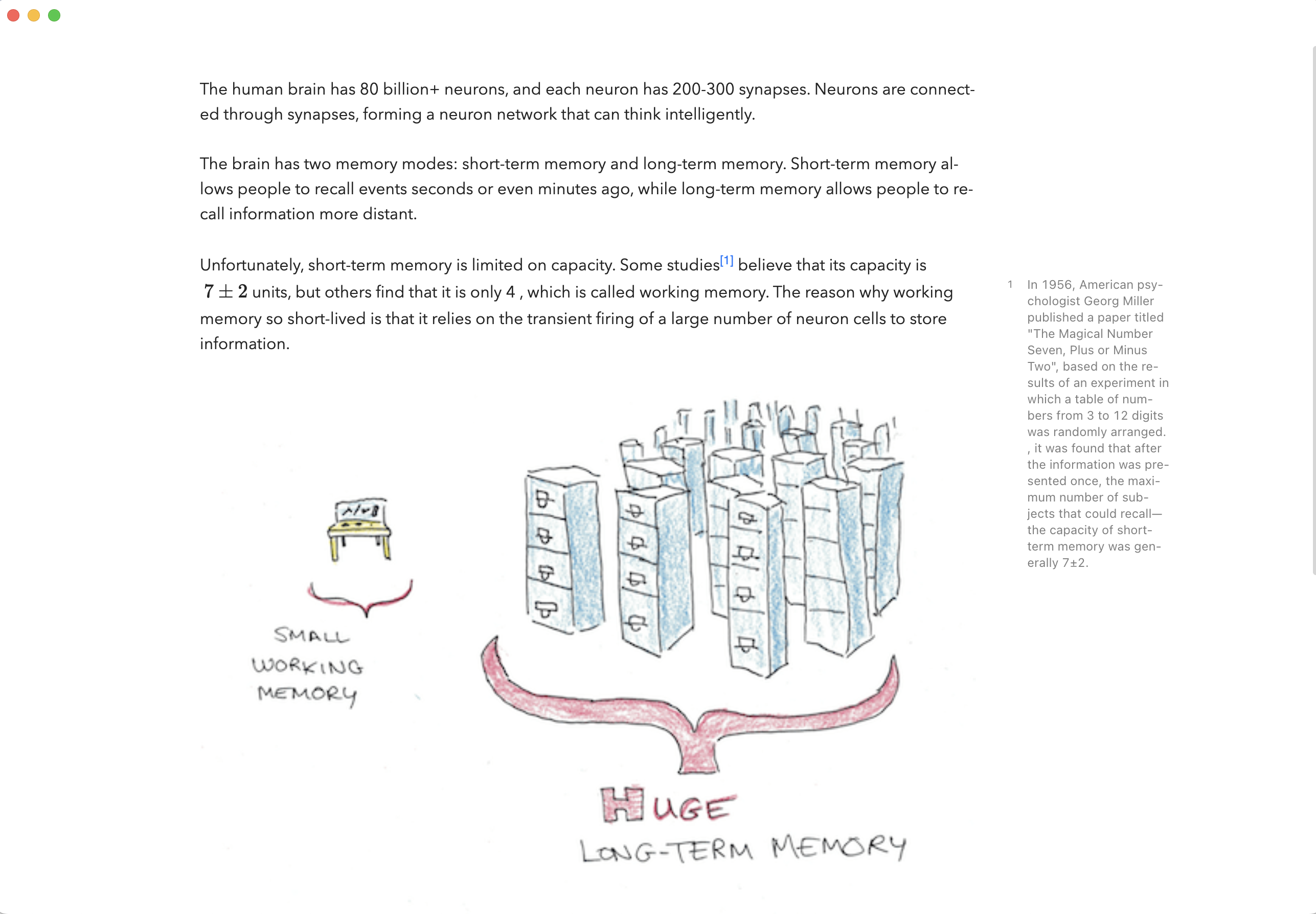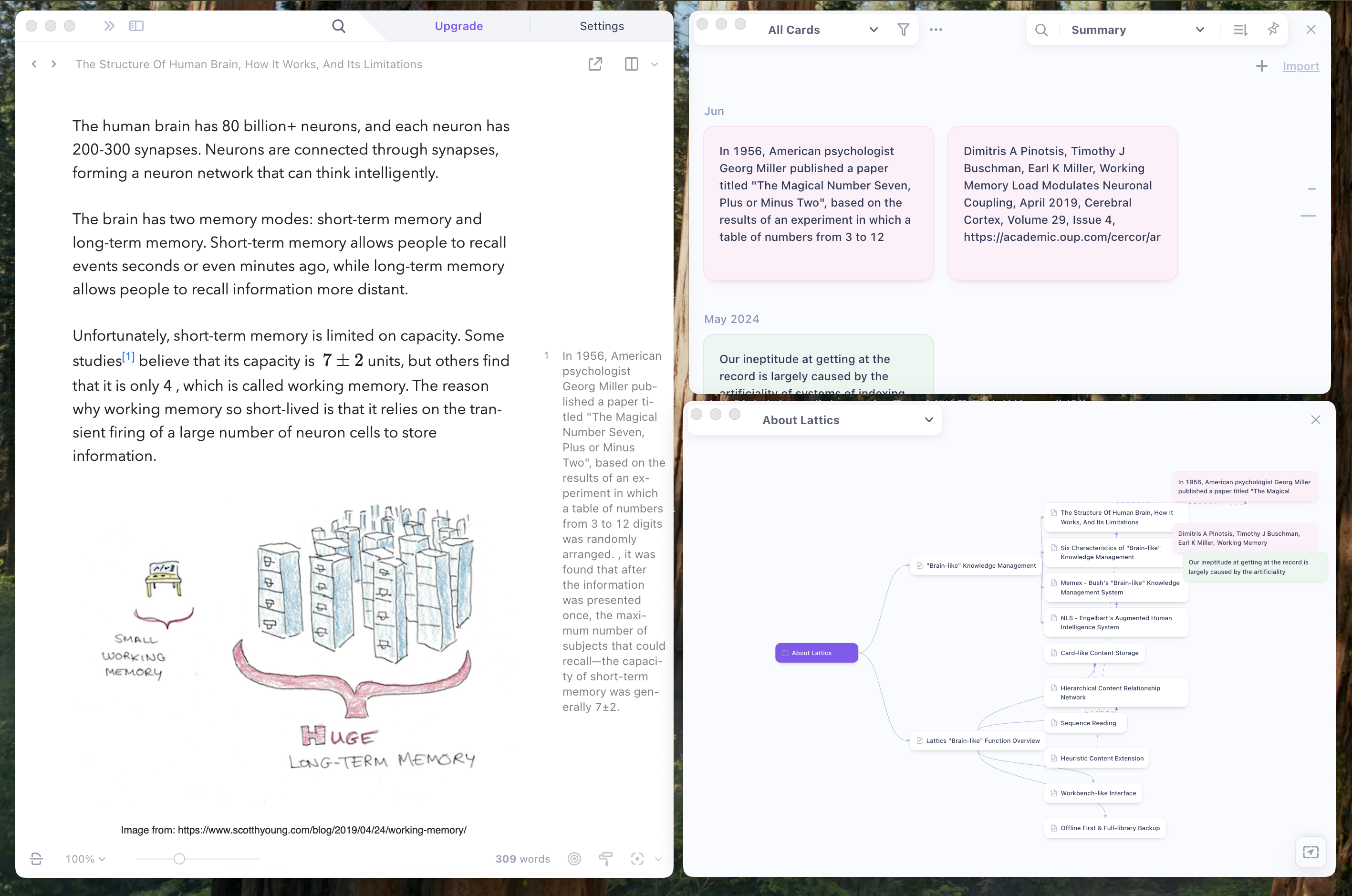Dynamic Interface
The interface of Lattics adopts a dynamic design concept, that is, its interface can change according to needs. When all interfaces are expanded, it will become a very powerful toolbox, from Project List, Project Outline, to Card Library, Graph, Timeline, Extension Information, and ToC, etc., all can be displayed in one interface; when going into the focus mode, all other interfaces will be folded up, leaving only the most simplest editor; and between these two extremes, any required functional interface can be displayed as needed, and even Projects, Articles, Card Library, Graph, etc. can be tiled on the desktop at the same time in standalone windows to form a tool combination suitable for handling certain writing task
The whole interface of Lattics can be divided into four parts from left to right:
- On the far left, is the highest level content management interface, including project list, tag list, trashcan, and unsorted. Both the project list and tag list provide search feature, which are convenient for specifying keywords for filtering projects or tags. The tag list can be folded or expanded, and you can also drag it to adjust its height. Unsorted lists articles and files that do not belong to any project.
- The second left, shows the project outline or the content list belonging to a certain tag, which can import, export, sort out, auto numbering, writing goal, sequence reading, etc.
- The central , is the rich text editor or PDF reader, which is the main area for writing and reading content
- On the far right, is the toolbar for auxiliary functions, which includes Card Library, Graph, Flashcards, Timeline, Extension Interface, Style Template, Statistics, Tutorial, and Feedback. As shown in the figure below, with the expanded card library

When the leftmost interface is folded, the entire interface becomes more minimize, allowing you to focus on writing a certain project, as shown in the figure below, with the extension information interface, which lists the projects, tags, memo, forward links, backward links, and other related information of the current article.

Click the switch icon at the left-top of the interface to fold the project outline. The interface will be further minimize, as shown in the figure below, with showing the style template interface, where you can define the styles of various elements such as titles, text, lists, image, table, code block, math equation, and columns, and you can save them as templates.

Click the focus mode in the lower right corner of the editor to fold all interfaces, leaving only the editor. You can now focus on writing an article, as shown in the figure below.
In particular, if you drag the lower right corner of the interface to adjust the window size, Lattics will automatically fold or extend the project list, project outline and other interfaces according to its size, intelligently display the content you are most likely to pay attention to. In the most extreme case, when the Lattics interface window is very small, it will only display the article content, and all other interfaces will be folded.

In some cases, you may need to open multiple projects and articles at the same time, or need to open card library, graph, timeline, etc. at the same time. You can combine them through standalone window to form a powerful tools. As shown in the figure below, with an article, a card library and a graph, they are laid out on the desktop at the same time.
The dynamic interface of Lattics is very unique, flexible, and much more powerful than any other editors, it brings great convenience to people's writing.
